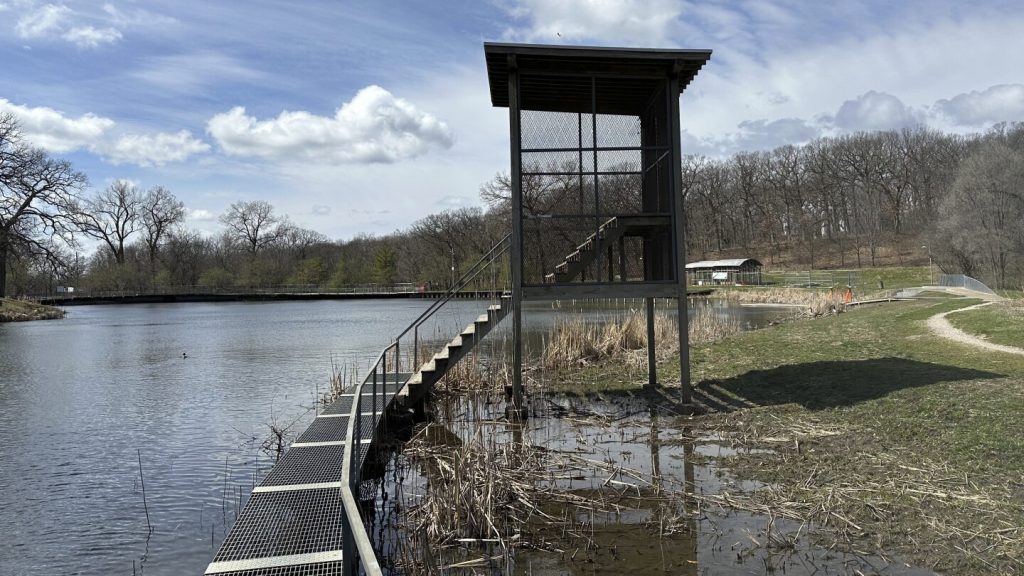The Des Moines Art Center announced plans to begin demolishing the artwork called Greenwood Pond: Double Site, citing safety concerns and the high cost of repairs. The artwork, completed in 1996 by artist Mary Miss, is considered a highpoint of her career and has sparked outrage from Miss, other artists, and arts organizations. Miss claims that the art center’s plan to remove the artwork violates a 1994 contract that requires the museum to maintain the piece.
The artwork offers different perspectives of a small wetland, including views from wooden decks, gravel paths, metal walkways, and structures that allow viewers to see the water at eye-level and from above. Celebrated as an innovative example of land art, the artwork is vulnerable to Iowa’s extreme weather conditions, according to the art center. Officials claim that much of the artwork would need to be replaced at a cost of $2.6 million, with future maintenance costing millions more. Fencing has been installed to block access to hazardous areas of the artwork.
The art center defended its decision to remove the artwork, stating that it is necessary for the well-being of their guests. Director Kelly Baum emphasized the importance of creating a secure and welcoming environment for visitors, where trust and creativity can flourish. The Cultural Landscape Foundation has been leading efforts to oppose the removal of the artwork, calling it a milestone in the land art movement and highlighting its significance as a work created by a female artist in a field dominated by men.
Removing the artwork will require heavy equipment to be brought to the site, draining the pond to access the infrastructure, and constructing new paths over a period of three months or more. The art center plans to fund the project from its budget, with no city funds being used. Despite the controversy surrounding the decision to dismantle the artwork, the art center is moving forward with the demolition plans, sparking a debate on the preservation of public art and the responsibilities of institutions to maintain and protect historical works.


